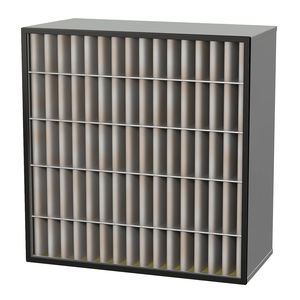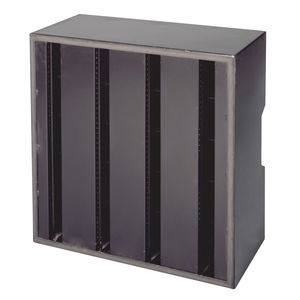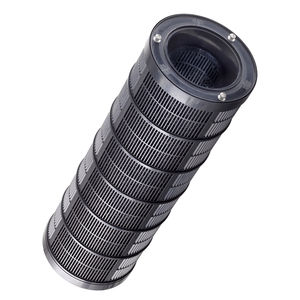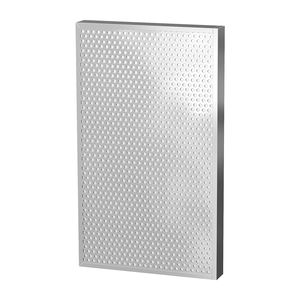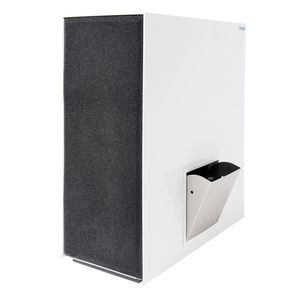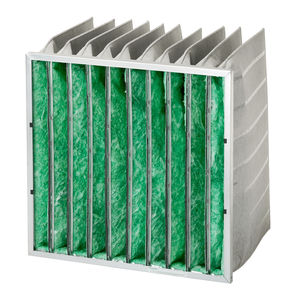
Activated carbon filter CamCarb CMairfor healthcare facilitiesstainless steel
Add to favorites
Compare this product
Characteristics
- Filter type
- activated carbon
- Fluid
- air
- Applications
- for healthcare facilities
- Material
- stainless steel
- Weight
3.9 kg, 5.2 kg
(8.6 lb, 11.46 lb)
Description
A metal cylindrical molecular filter filled with Camfil activated alumina or activated carbon.Typically installed in supply, recirculation, and exhaust air systems in commercial, industrial, and process applications with temperatures up to 80ºC. Their refillable design provides a low total cost of ownership for the removal of odorous and irritant gases.
Ideal for high temperature applications above 60ºC
Factory refillable
Inherently leak-free design when installed in dedicated hardware
Combines highest removal efficiency and low pressure drop
Predicted removal efficiency and lifetime by Camfil's proprietary software
Typical target gases: VOCs, ozone, nitrogen dioxide, sulfur dioxide
Leak-free installation ensures maximum possible efficiency
360 degree geometry and even air distribution ensures maximum possible lifetime
May be re-filled, lowest possible Life Cycle Cost (LCC)
Rapid bayonet fitting system
Stainless steel construction
Modular and flexible assembly
SPECIFICATIONS
APPLICATION
The most reliable molecular filter for high efficiency and long-term control of molecular contaminants in sensitive buildings and process industries.
They may also be used in odour removal applications in pulp and paper mills and wastewater treatment plants, or lighter applications such as airports, cultural heritage building, and commercial offices.
FRAME
Stainless steel, Galvanised steel
MEDIA
Activated Carbon, Impregnated Activated Carbon
MAX TEMPERATURE (°C)
-21ºC to 80 ºC
GASKET
Rubber
Catalogs
PRODUCT CATALOGUE 2015
358 Pages
*Prices are pre-tax. They exclude delivery charges and customs duties and do not include additional charges for installation or activation options. Prices are indicative only and may vary by country, with changes to the cost of raw materials and exchange rates.




